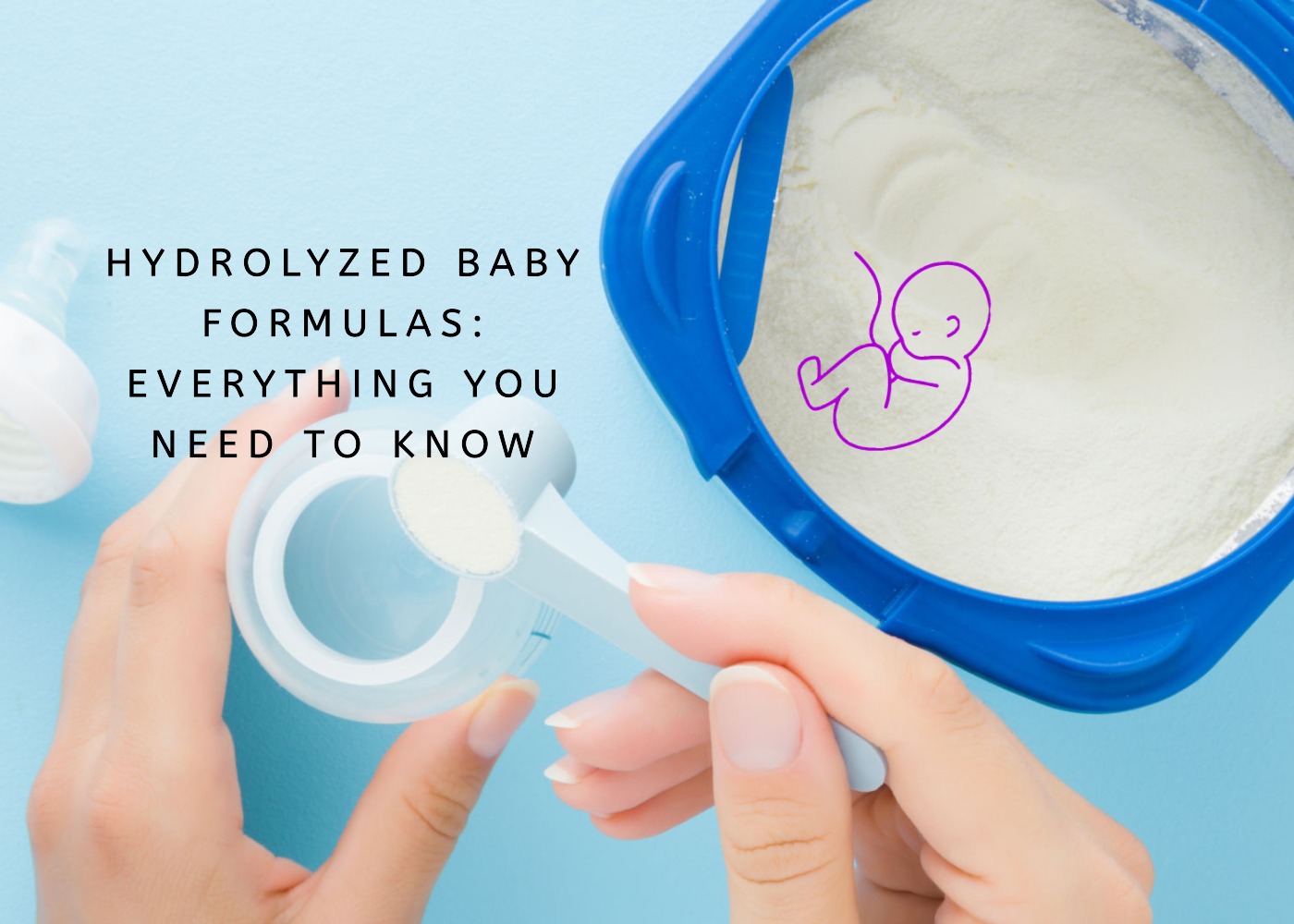
Key Takeaways. Pros and Cons of Maltodextrin in Baby Formula
Pros of Maltodextrin Cons of Maltodextrin Provides Additional Carbohydrates for Energy: Maltodextrin is a complex carbohydrate that is easily digestible and provides slow-release energy. It supports healthy muscle and brain growth. Rapid Blood Sugar Spike: Maltodextrin ranks higher on the glycemic index than glucose, implying a quick rise in blood sugar levels, potentially leading to obesity and metabolic disorders. Improves Texture and Consistency of Formula: Maltodextrin helps create a smooth and creamy texture that can be easier to digest. It also slows down digestion, providing longer-lasting energy. Impact on Insulin Levels: The effects of maltodextrin on insulin levels might contribute to various health problems. Used as a Source of Dietary Fiber: Maltodextrin acts like fiber, helping regulate bowel movements and potentially reducing the risk of constipation. However, excessive intake may lead to stomach discomfort or diarrhea. Labeling Confusion: Maltodextrin is often not labeled as sugar on nutritional facts labels, leading to confusion and underestimation of sugar content in products. Highly Processed: Maltodextrin is a highly processed carbohydrate made with heat, chemicals, and acids. Potential GMO and Additive Content: Maltodextrin may contain GMOs and other additives, raising concerns about safety and impact on infant health.
In this blog post, we will delve into what maltodextrin is, its purpose in baby formula, and the pros and cons of using it.
With a clearer understanding of this complex carbohydrate’s role in infant nutrition, you can make more informed choices about the best formula for your baby.
Let’s get after it!
Our Short opinion
From what you’ve already read, maltodextrin may seem undesirable, but it has its uses.
In our professional opinion, it’s always best to opt for the natural choice, which means choosing a formula whose ingredients closely resemble breast milk. In terms of carbohydrates, this means selecting a lactose-only formula with a 60:40 whey to casein ratio, and if it’s organic, even better.
That being said, there is one situation where maltodextrin can be beneficial, specifically when a baby is lactose intolerant or has allergies to cow’s protein. In these cases, maltodextrin serves as an effective lactose substitute.
However, this is the only truly beneficial application of maltodextrin.
What Is Maltodextrin in Baby Formula?
Maltodextrin is a complex carbohydrate made from starch, commonly derived from corn or wheat, and it is used in some baby formulas as a replacement for lactose.
*Read: Starch in Baby Formula
Maltodextrin is a food additive made from starch, primarily corn, rice, or potato.
It is a white powdery substance easily digestible and used as a thickening agent in various food products.
The composition of maltodextrin can vary depending on its source and production method; however, it generally has a lower glycemic index than sucrose or lactose.
This makes it appealing for baby formula as it provides energy without causing sudden spikes in blood sugar levels.
*Read: Corn Syrup In Baby Formula
Why Is Maltodextrin Used In Baby Formulas?
Maltodextrin is used in baby formula for the following reasons:
It’s more filling than lactose, meaning that for hungry babies might be a good alternative.
Maltodextrin can help improve the texture and consistency of the formula, making it more palatable and easier to consume for some babies.
It may be added to formulas as a source of dietary fiber, which can help support digestive health and regular bowel movements.
It is a useful carbohydrate in formulas with reduced lactose content to help babies with intolerances or possible allergies.
Maltodextrin vs Lactose
Both maltodextrin and lactose have their uses in baby formula.
Lactose, the natural carbohydrate found in breast milk, closely mirrors the nutritional profile babies naturally consume.
On the other hand, Maltodextrin could be beneficial for babies with lactose intolerance or for those who need to feel fuller for longer.
| Maltodextrin | Lactose | |
|---|---|---|
| Origin | Derived from corn, rice, or potato starch. | Natural sugar found in breastmilk and cow’s milk. |
| Allergenic Potential | Low – can be a good choice for babies with lactose intolerance. | Higher – some babies may be lactose intolerant. |
| Digestion Speed | Slower – stays in the baby’s stomach for a longer time, helping them feel fuller. | Faster – easily digestible and provides quick energy. |
| Feeling of Fullness | High – Maltodextrin might make your baby feel fuller and satisfied for longer periods. | Low – Lactose digests quickly and might leave your baby hungry sooner. |
| Natural Presence in Breast Milk | No – not naturally occurring in breast milk. | Yes – it is the primary carbohydrate in breast milk. |
Maltodextrin and lactose are both carbohydrates found in baby formula.
Maltodextrin is often used as a replacement for lactose in formulas designed for babies who have difficulty digesting lactose or are allergic to it.
Lactose, on the other hand, is the primary carbohydrate found in breast milk and most commercial infant formulas. While maltodextrin provides additional carbohydrates for energy and helps thicken the formula, lactose is a better option for infants since it supports healthy gut bacteria growth and improves calcium absorption.
Quick reminder.
Every baby is different, and there is no one-size-fits-all formula.
While it is true that lactose is generally better because it is the most natural, it does not apply to all babies.
Hypoallergenic formulas generally have less lactose content.
Many formulas add small percentages of maltodextrin to aid digestion and make the formula more filling for the baby.
What other common carbs can we find in infant formula?
Lactose (Milk Sugar)
Lactose is the primary carbohydrate in breast milk and the most common ingredient in many infant formulas. It helps to establish healthy gut microbiota in infants and is vital for brain development. Some babies, however, may have difficulty digesting lactose due to lactose intolerance.
Fructose (Fruit Sugar)
Fructose is a monosaccharide naturally occurring in fruits, honey, and certain vegetables. It’s not typically used as the primary carbohydrate source in infant formulas, but it may be present in small amounts. It’s easier to digest than lactose, but a high fructose intake at an early age may contribute to the risk of obesity and metabolic disorders.
Glucose (Starch Sugar)
Glucose is the simplest form of sugar and is the body’s preferred energy source. It’s rarely used alone in baby formula but may be combined with other sugars to form complex carbohydrates like maltodextrin. Glucose-based carbs are usually easier to digest, making them suitable for babies with lactose intolerance.
Sucrose (Cane Sugar)
Sucrose, or table sugar or cane sugar, is sometimes used in infant formulas. However, the use of sucrose in infant formulas is controversial. It is not permitted in formulas in some countries, including the US, due to concerns over tooth decay and overconsumption, leading to obesity.
Starch (Plant-Based Complex Carb)
Starch is a complex carbohydrate derived from plants, such as corn, potatoes, or rice. It’s used in some formulas as a thickener or to increase the calorie content. Formulas containing starch may be harder to digest for some infants, particularly newborns, as they lack the necessary enzymes to break down complex carbohydrates fully.
Last Words
Conclusively, while maltodextrin may initially seem undesirable, it does have its place in baby formulas.
Choosing a natural, lactose-based formula that closely mimics breast milk is always preferable, ideally with a 60:40 whey-to-casein ratio.
However, maltodextrin can serve as an effective substitute for babies with lactose intolerance or cow’s protein allergies.
Remember, its use is specific and should be considered carefully.
We’re Maria and Alberto, a married couple and educators who are nutrition enthusiasts. Even before we had kids, we were already crazy about nutrition.
We’d read scientific articles, watch videos from nutritionists, and spend hours listening to nutrition podcasts.
Today, we continue doing this, but in a different way, as we’ve learned to sift through the noise and trends. Nutrition, like any other field of knowledge, the more you read and learn, the more you develop a comprehensive understanding of reality, and that’s what has happened to us.
Before having our first child, we focused on learning everything we could about child nutrition, using the same techniques we had already employed, backed by our extensive knowledge in nutrition.
Our mission is to help other parents with their children’s nutrition, to help them become the best versions of themselves.
If we are what we eat and drink, which is absolutely true, let’s do it right!







